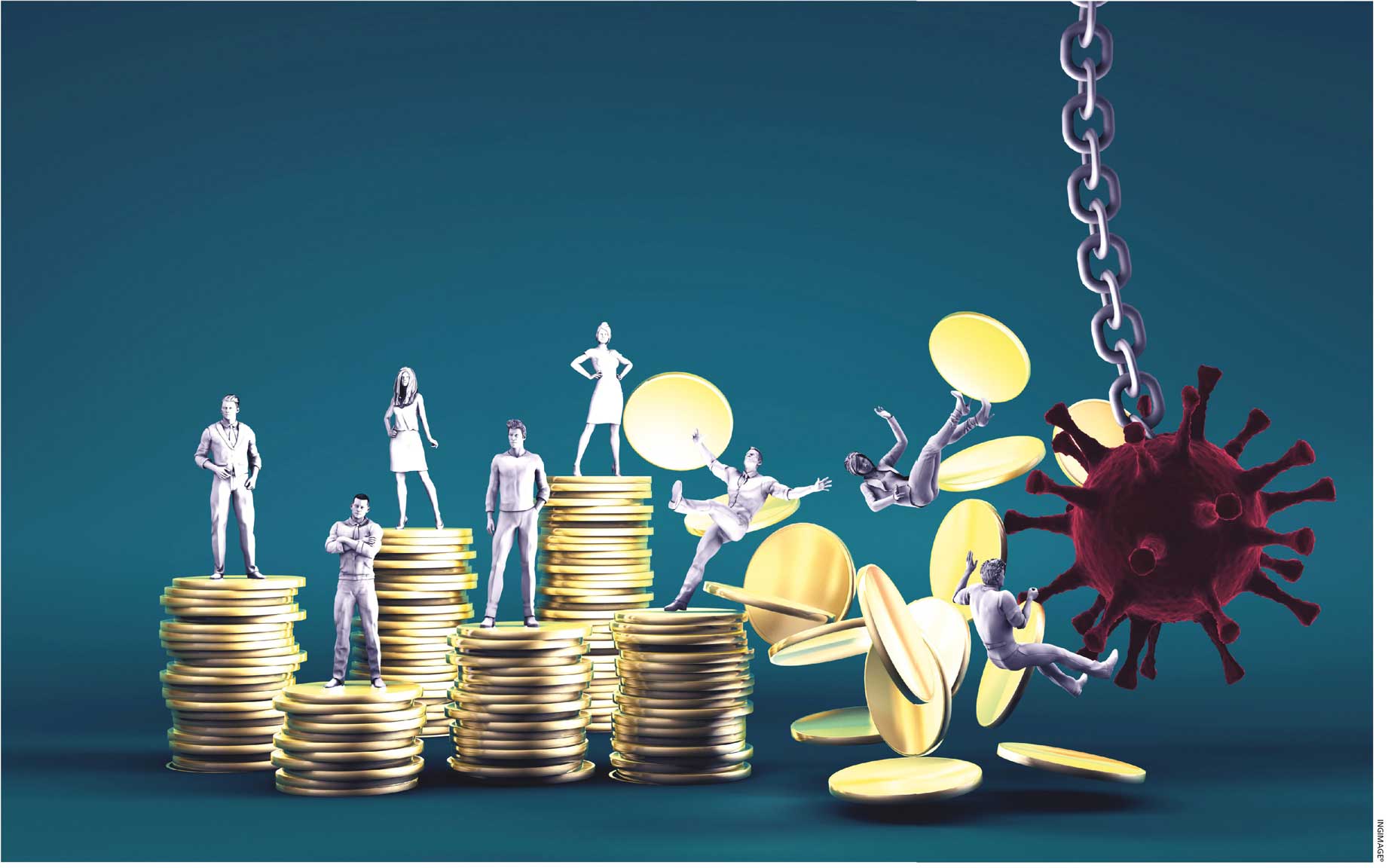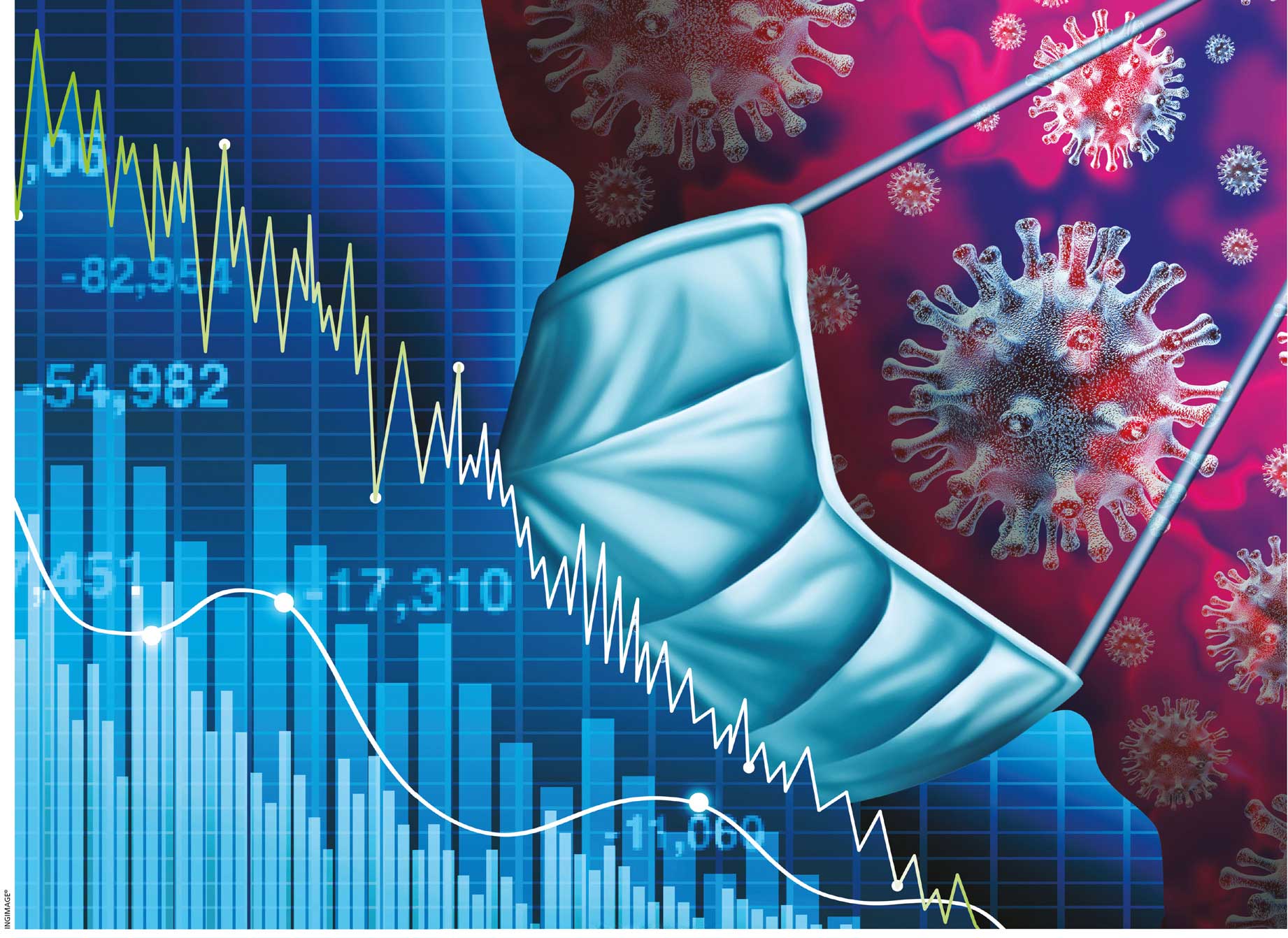THE ANNUAL REVIEW
Brand resilience amid market turmoil
Ruchi Gunewardene and Aliakber Alihussain review the results in this edition of the Brands Annual
The introduction to the last edition’s review noted how tumultuous a year it was following the Easter Sunday bombings in 2019. Who would have thought that this year would be even worse in terms of economic turmoil?
 The impact on business and brands has been extensive; and to do justice to this fact, Brand Finance has set out to undertake a thorough fact-based analysis.
The impact on business and brands has been extensive; and to do justice to this fact, Brand Finance has set out to undertake a thorough fact-based analysis.
Our valuations follow a process flow. This tracks how marketing and other corporate managers’ specific actions result in changes to a brand’s attributes (quality, availability, price, positioning, personality and so on).
Through market research, we measured how much these actions affect brands’ levels of familiarity, consideration and recommendation, and how increased consideration leads to behavioural changes among stakeholders, ultimately leading to a favourable financial uplift effect.
The process flow can be used in both directions. In one approach, it explains the value of brands. It also explains what actions need to be taken by marketing and corporate managers to strengthen brands and build more value. So the process is both a comprehensive summary of the performance of marketing activities to this point and a highly actionable tool for brand guardians going forward.
PANDEMIC PANIC Year 2020 put businesses the world over to their toughest test. This refers to the impact of the pandemic on economic activity and immediate GDP forecasts to diminished long-term prospects. It follows that resilience – including brands, which are important intangible assets – is arguably more critical for business than in the past.
Brands cannot be built overnight; it can take a decade or two. Once built however, brands are very resilient and can sustain business in difficult times.
This is what we see in this year’s results. Businesses that have systematically and strategically built strong brands can withstand the vagaries of uncertain markets, performing far better than weaker brands in the categories they operate in.
SECTOR STRENGTHS The total brand value for the top 100 Sri Lankan brands increased by 2.6 percent this year, growing by a mere Rs. 16 billion. This follows a decline of four percent last year so we are nowhere near being out of the woods.
The sector that showcased the best performance in our table relative to others was supermarkets. Being able to obtain basic groceries became a challenge in most urban areas while online deliveries surged. As consumer movement was restricted during the islandwide lockdown, supermarket chains had to dust off their online platforms to serve customers through direct to home deliveries.
Brands that successfully leveraged technological advancements emerged as winners in this year’s brand valuations. Supermarkets responded well and customers have recognised this, which is evident through the sector’s 18 percent increase in overall brand value excluding new entrants.
Hospitality was the biggest loser of brand value at almost 36 percent. As holidays were cancelled and people were instructed to work from home (WFH), the sector reached an almost complete standstill – in terms of both foreign tourism and domestic travel – for the better part of 2020 until the latter began to pick up towards the tail end of the year. This had a negative impact on the sector’s financial outlook, driving down brand values across the board.
Another clear impact of the COVID-19 pandemic was the severe crisis faced by the airline sector. SriLankan Airlines saw a decline in brand value by 15 percent, primarily due to challenging financial performance.
Although Sri Lanka is no stranger to rough patches, the road to recovery and hopes are pinned on the speedy roll out of the immunisation programme and speed at which the global economy will kick off once again.
WINNING BRANDS Amid this turmoil, Dialog has retained its enviable position as the Most Valuable Consumer Brand in Sri Lanka for the third consecutive year. It maintains a brand strength of 86 (of 100) and retains its ‘AAA’ rating.
However, it is closely followed by the No. 2 brand BOC – there’s only Rs. 73 million separating the two leaders. People’s Bank has retained its position as the third most valuable brand even though its brand value decreased.
As movements became restricted due to the curfew and lockdowns that followed, the telecom sector was a major beneficiary as more consumers connected remotely, cutting across personal as well as business interactions. Dialog’s leadership in mobile and WiFi enabled it to strengthen its bond with consumers.
Since the late ’90s, Dialog has continued to prove itself as a pioneer in technology by being quick to take on new initiatives to move into digital innovations. The brand continues to display confidence in its growth strategy through key initiatives such as acquiring H One to supplement Dialog’s expansive suite of enterprise solutions and its partnership with Zoho Corporation to enable technology diffusion across all enterprise segments.
Keells has emerged as the second strongest brand in the Sri Lanka 100 rankings with a score of 83 (out of 100), witnessing a brand value growth of 29 percent. Despite the impact of isolation measures imposed in several parts of the island, the brand has maintained its growth momentum aided by increased online sales penetration.
SLT-Mobitel’s entry into the top 10 is attributed to the unification of the SLT and Mobitel brands. It would make sense to strengthen its brand equity by synergising customer goodwill by creating an integrated technology driven company. There’s much that it needs to be doing besides rebranding to make headway against the most valuable brand in our table – i.e. Dialog – as they fiercely compete in the field of telecommunications.
As more Sri Lankans shop for their staple food products in ‘modern trade,’ we have another winner in Cargills Food City, which makes its debut in the top 10.
BANKING SECTOR The year was one of mixed results for the banking sector. The overall brand value of the sector grew by one percent, accounting for 43 percent of brand value in the table.
We observe brands performing at both ends of the spectrum with some losing value in double digits whereas other banks appreciated in double digits. This has shifted the banks ranking in the top 10 most valuable brands with BOC maintaining its position as the most valuable in the sector, NSB moving up in the rankings and Sampath Bank dropping down one place.
Despite the lower economic activity and reduced interest rates, we witnessed some banks grow their year on year revenues.
NDB was the fastest growing brand this year with a 15 percent growth in brand value. This is attributed to continued growth in revenue, which can also be linked to an improvement in the brand’s perception, resulting in building greater strength.
At the other end of the spectrum, RDB has lost 18 percent of its brand value; it has recorded diminishing growth in its revenues over the past four years. The brand also lacks consistency in its brand, which has impacted its brand strength.
Banks played a vital role over the past year in ensuring the economy’s stability and providing consumers with relief from the financial burden caused by the pandemic.
Brand Finance’s global research indicated an uptick in reputation for banks due to initiatives taken to support communities. However, despite similar efforts being made by Sri Lankan banks, our consumer research reflects a drop in reputation for banks.
SUPERMARKET SECTOR Keells and Cargills Food City saw an increase in brand value this year while Arpico Supercentre’s declined.
Sathosa, which has been valued for the first time, ranked third within the sector. Despite being relatively weak in terms of brand strength, it managed to rank higher than Arpico Supercentre with possibly a better response during the COVID-19 pandemic.
When leading supermarket brands such as Keells and Cargills were still struggling to perfect their online platforms, Sathosa’s collaboration with PickMe to deliver groceries in the city of Colombo made it stand out as a customer centric brand.
Consumer perceptions of Keells’ and Cargills Food City’s innovativeness improved significantly this year, possibly due to the greater emphasis on and acceptance of their online initiatives and home delivery services.
INSURANCE SECTOR In the year under review, brands in the general insurance segment recorded a fall in brand value of 3.4 percent excluding new entrants. This could be attributed to the impact of the pandemic on all forms of travel due to the lockdowns.
The curtailment of transportation impacted motor premiums, which account for a large proportion of general insurance premiums. The pandemic severely impacted travel in the tourism sector, resulting in a significant drop in hiring these vehicles. But as the restrictions eased, most general insurance companies’ gross written premiums have bounced back and reduced the negative impact on brand value.
Despite the hard times, Ceylinco General Insurance saw its brand value grow 18 percent compared to the previous year. Our brand equity study found that the brand strengthened more than its peers – it was the fastest growing brand in the segment.
Among the general insurance brands, Sri Lanka Insurance General continued to be the most valuable and strengthened itself further with an ‘AAA-’ rating.
In line with the historical trend of growing more quickly than general insurance, the life insurance segment saw its total brand value rise by a mere 0.3 percent excluding new entrants.
 The Sri Lanka Insurance Life business recorded a 20 percent growth due to it becoming the strongest brand in the life insurance sector. Most other brands in the segment saw their brand strength decline and this impacted their brand values.
The Sri Lanka Insurance Life business recorded a 20 percent growth due to it becoming the strongest brand in the life insurance sector. Most other brands in the segment saw their brand strength decline and this impacted their brand values.
FUTURE CHALLENGES In times of great uncertainty, building resilient brands should be what drives marketing actions.
This requires a long-term view by adopting a brand blueprint or well-defined brand platform, better brand management processes with rigorous systems, and effective strategic decision making where investments are made in only those areas that will result in superior returns.
Rather than being obsessed with the actual brand value in any particular year, it is essential to understand brand value drivers and adapt marketing strategies accordingly, thereby moving brands to a more resilient platform in the long term.
Another way to look at this is to view the brand as an asset that requires careful nurturing. This approach will hold businesses in good stead as we navigate through tumultuous times.




